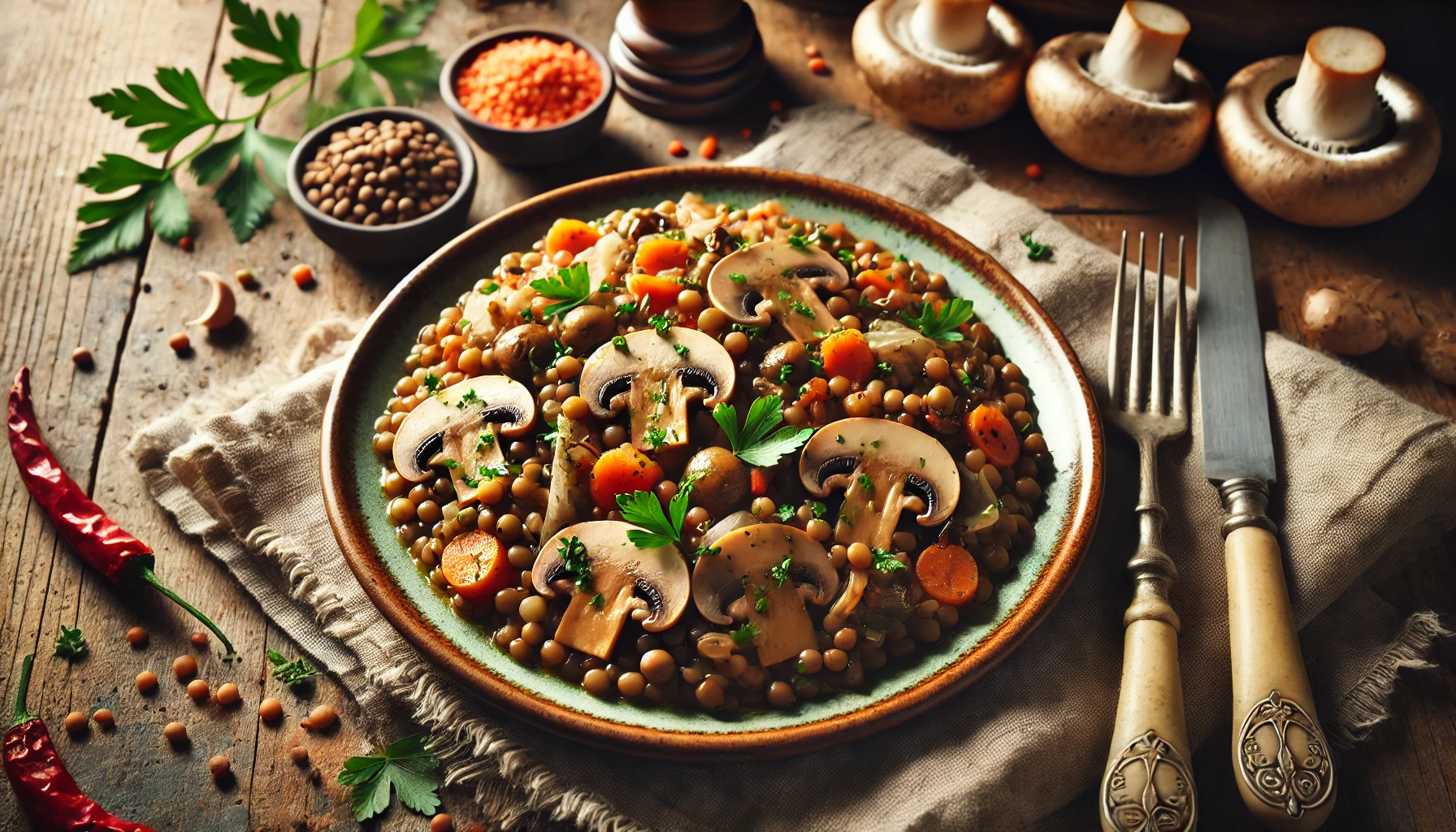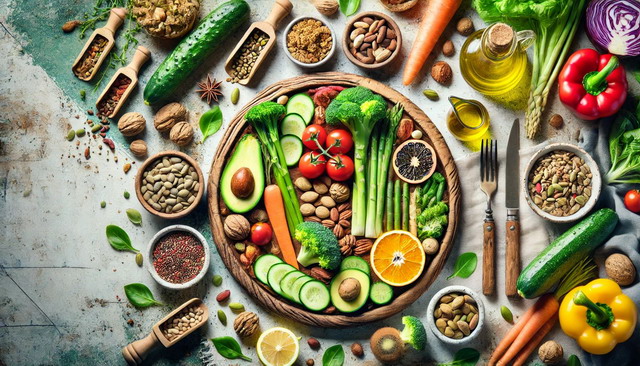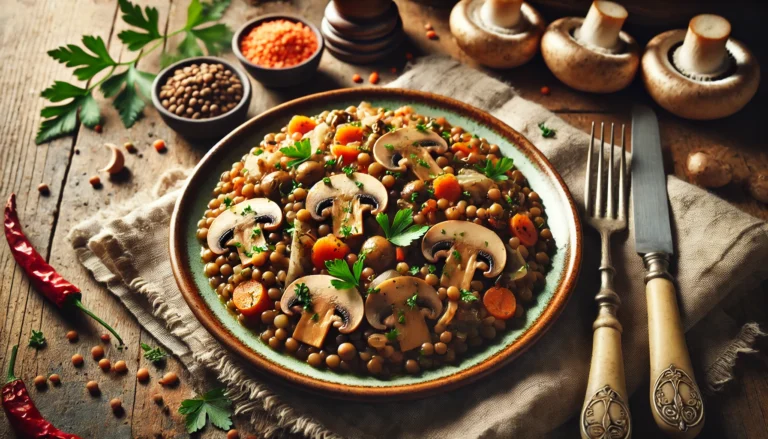Butternut squash risotto is the epitome of comfort food, offering a warm, creamy, and satisfying meal that feels like a hug in a bowl. This dish is a celebration of fall’s bounty, combining the natural sweetness of butternut squash with the rich, velvety texture of perfectly cooked Arborio rice. Whether you’re a seasoned cook or a kitchen novice, risotto has a way of bringing everyone together, transforming simple ingredients into something extraordinary.
In this blog post, we’ll explore various ways to elevate this classic dish, from adding savory Parmesan and crunchy pine nuts to experimenting with earthy mushrooms and fragrant sage. We’ll also dive into techniques for making risotto faster and easier using an Instant Pot, as well as tips for creating a vegan or gluten-free version that everyone at the table can enjoy. No matter your preference, there’s a butternut squash risotto recipe here to suit your taste.
Join us as we take a deep dive into the world of butternut squash risotto, where each variation brings something unique to the table, and discover how this versatile dish can be customized to fit any occasion or dietary need.
Creamy Butternut Squash Risotto Recipe
When it comes to comfort food, risotto often ranks high on the list. Its creamy texture and rich flavor make it a beloved dish around the world. But there’s something particularly special about butternut squash risotto. This variation adds a touch of sweetness and a vibrant orange hue that’s not only visually appealing but also incredibly satisfying to the taste buds. Whether you’re a seasoned home cook or a kitchen novice, this recipe is sure to impress.
Why Butternut Squash is Perfect for Risotto
Butternut squash is a versatile ingredient that can be used in a variety of dishes, but it truly shines in risotto. The natural sweetness of the squash pairs beautifully with the creamy texture of the Arborio rice, creating a harmonious balance of flavors. Butternut squash also adds a subtle earthiness that deepens the complexity of the dish, making each bite more interesting than the last.
Another reason butternut squash is perfect for risotto is its ability to blend seamlessly into the dish. When cooked, the squash becomes soft and tender, almost melting into the risotto. This creates a smooth, velvety consistency that makes the dish feel luxurious. Additionally, butternut squash is packed with nutrients like vitamin A, vitamin C, and fiber, making this dish not only delicious but also nutritious.
Key Ingredients Overview
Before we dive into the step-by-step instructions, let’s take a moment to talk about the key ingredients in this recipe:
- Butternut Squash: The star of the show, butternut squash, should be peeled, seeded, and diced into small cubes. This will allow the squash to cook evenly and blend into the risotto seamlessly.
- Arborio Rice: This short-grain rice is essential for achieving the creamy texture that risotto is known for. Arborio rice has a high starch content, which is released during cooking, creating a rich and creamy consistency.
- Vegetable Broth: To keep the dish vegetarian, we’ll be using vegetable broth as the cooking liquid. The broth should be warm before it’s added to the risotto to ensure even cooking.
- Onion and Garlic: These aromatics form the flavor base of the risotto, adding depth and complexity to the dish.
- White Wine: A splash of white wine adds acidity and brightness to the risotto, balancing the richness of the other ingredients.
- Parmesan Cheese: Freshly grated Parmesan cheese adds a savory, umami flavor that enhances the overall taste of the dish.
- Butter: A small amount of butter adds richness and helps to bind the risotto together.
- Sage: Fresh sage leaves complement the sweetness of the butternut squash with their earthy flavor.
Now that we’ve covered the key ingredients, let’s get cooking!
Step-by-Step Cooking Instructions
- Prepare the Butternut Squash: Start by peeling the butternut squash with a vegetable peeler. Cut off the top and bottom ends, then slice the squash in half lengthwise. Scoop out the seeds with a spoon and discard them. Next, cut the squash into small, bite-sized cubes.
- Cook the Butternut Squash: In a large skillet or saucepan, heat a tablespoon of olive oil over medium heat. Add the diced butternut squash and season with salt and pepper. Cook the squash for about 10-15 minutes, stirring occasionally, until it’s tender and starting to caramelize. Remove the squash from the pan and set it aside.
- Sauté the Aromatics: In the same pan, add another tablespoon of olive oil. Add the finely chopped onion and garlic and sauté until the onion is translucent and the garlic is fragrant, about 5 minutes.
- Toast the Rice: Add the Arborio rice to the pan and stir to coat it in the oil. Cook the rice for 2-3 minutes, stirring constantly, until the edges of the grains start to look translucent.
- Deglaze with White Wine: Pour in the white wine and stir continuously until the wine is absorbed by the rice. This step adds a layer of flavor and helps to develop the risotto’s characteristic creaminess.
- Cook the Risotto: Begin adding the warm vegetable broth to the rice, one ladleful at a time. Stir the risotto constantly and allow each addition of broth to be absorbed before adding the next. Continue this process until the rice is creamy and cooked through, but still has a slight bite, about 18-20 minutes.
- Incorporate the Butternut Squash: Once the rice is cooked, stir in the cooked butternut squash. The squash should blend into the risotto, adding a pop of color and flavor to the dish.
- Finish with Butter and Parmesan: Remove the pan from the heat and stir in the butter and grated Parmesan cheese. This step adds richness and a glossy finish to the risotto.
- Season and Serve: Taste the risotto and adjust the seasoning with salt and pepper if needed. Garnish with fresh sage leaves and a sprinkle of Parmesan before serving.
Vegan Butternut Squash Risotto: A Delicious Dairy-Free Alternative
For those following a vegan diet or simply looking to reduce their dairy intake, this vegan butternut squash risotto is a must-try. With a few simple substitutions, you can enjoy all the creamy, comforting goodness of traditional risotto without any animal products. The key to a successful vegan risotto lies in achieving the right texture and flavor balance, and this recipe does just that.
Overview of Vegan Substitutes
The most obvious substitutions in a vegan risotto are replacing the butter and Parmesan cheese. Instead of butter, you can use a high-quality olive oil or a vegan butter alternative. These options provide the necessary richness to the dish without compromising on flavor. As for the Parmesan cheese, nutritional yeast is a fantastic substitute. Nutritional yeast has a nutty, cheesy flavor that mimics the taste of Parmesan, and it also adds an extra boost of B-vitamins.
Another consideration for a vegan risotto is the choice of broth. While vegetable broth is a standard option, you can also experiment with different flavors by using mushroom broth or even a light miso broth. These broths add depth and umami to the dish, enhancing the overall flavor profile.
Finally, incorporating plant-based milk or cream can take your vegan risotto to the next level. A splash of coconut milk, cashew cream, or almond milk can add a subtle creaminess that complements the butternut squash beautifully.
How to Achieve Creaminess Without Dairy
Achieving a creamy texture in a vegan risotto is all about technique. One of the key methods is to ensure that you’re stirring the risotto constantly while it cooks. This helps to release the starches from the rice, creating that signature creaminess. Additionally, using a good-quality Arborio rice is crucial, as it has a higher starch content than other rice varieties.
Another tip for a creamy vegan risotto is to puree a portion of the cooked butternut squash and stir it into the risotto. This not only enhances the squash flavor but also adds a rich, velvety texture to the dish. If you’re using plant-based milk or cream, add it towards the end of the cooking process to avoid curdling and to maintain a smooth consistency.
Tips for Enhancing Flavor in Vegan Risotto
To elevate the flavor of your vegan butternut squash risotto, consider adding a few additional ingredients. Roasted garlic, for example, adds a deep, caramelized flavor that pairs beautifully with the sweetness of the squash. You can also incorporate fresh herbs like sage, thyme, or rosemary to add an aromatic touch.
Another way to boost flavor is by topping the risotto with a drizzle of truffle oil or a sprinkle of toasted nuts. Truffle oil adds a luxurious, earthy note, while nuts like pine nuts or walnuts provide a satisfying crunch.
In summary, creating a vegan butternut squash risotto that’s just as creamy and flavorful as its traditional counterpart is entirely possible with a few thoughtful substitutions and techniques. Whether you’re vegan or simply looking for a dairy-free alternative, this recipe is sure to become a favorite in your repertoire.
Instant Pot Butternut Squash Risotto: Quick and Easy
In today’s fast-paced world, finding the time to prepare a delicious and wholesome meal can be challenging. That’s where the Instant Pot comes in. This modern kitchen marvel has revolutionized the way we cook, allowing us to create dishes that are traditionally time-consuming, like risotto, in a fraction of the time. Butternut squash risotto is no exception—using an Instant Pot, you can have this creamy, flavorful dish on the table in under 30 minutes, with minimal effort.
Benefits of Using an Instant Pot for Risotto
The Instant Pot’s appeal lies in its ability to simplify the cooking process without sacrificing flavor or texture. When it comes to risotto, this means no more standing over the stove, stirring constantly as you slowly add broth to the rice. Instead, the Instant Pot does all the work for you, freeing you up to focus on other tasks—or simply relax.
One of the biggest benefits of using an Instant Pot for risotto is the consistency it provides. The pressure cooking method ensures that the Arborio rice cooks evenly and absorbs the flavors of the broth and butternut squash perfectly. The result is a risotto that’s creamy and rich, with a texture that rivals traditional stovetop methods.
Another advantage is the speed. Cooking risotto on the stove can take upwards of 30 minutes of active cooking time, but with the Instant Pot, you can achieve the same results in about half the time. This makes it an ideal option for busy weeknights when you want a comforting meal without the fuss.
Detailed Instructions for Instant Pot Risotto
Here’s how to make butternut squash risotto in the Instant Pot:
- Sauté the Aromatics: Start by setting the Instant Pot to the sauté function. Add a tablespoon of olive oil, followed by the chopped onion and garlic. Sauté until the onion is translucent and the garlic is fragrant, about 3-4 minutes.
- Add the Rice and Wine: Stir in the Arborio rice, coating it in the oil. Allow the rice to toast for about 2 minutes, stirring frequently. This step enhances the nutty flavor of the rice. Next, pour in the white wine and stir until the liquid is mostly absorbed.
- Add the Butternut Squash and Broth: Add the diced butternut squash to the pot, followed by the warm vegetable broth. Stir to combine all the ingredients. Secure the Instant Pot lid, set the valve to the sealing position, and select the manual or pressure cook setting. Set the timer for 6 minutes.
- Quick Release and Finish: Once the cooking time is complete, perform a quick release by carefully turning the valve to the venting position. When the pressure has fully released, open the lid and stir the risotto. The butternut squash should be tender, and the rice should be creamy. Stir in the butter and Parmesan cheese until melted and well combined.
- Serve and Enjoy: Taste the risotto and adjust the seasoning with salt and pepper if needed. Serve immediately, garnished with fresh sage leaves or a sprinkle of extra Parmesan.
Common Mistakes to Avoid with Instant Pot Risotto
While the Instant Pot makes risotto easier, there are a few common mistakes to avoid to ensure the best results:
- Overcooking the Rice: Be mindful of the cooking time. Risotto can become mushy if cooked for too long. Six minutes under pressure is typically perfect for achieving a creamy yet slightly al dente texture.
- Not Using Warm Broth: Always use warm broth when making risotto, even in the Instant Pot. Cold broth can cause the cooking process to stall and may result in unevenly cooked rice.
- Skipping the Sauté Step: Don’t skip the step of sautéing the aromatics and toasting the rice. This step builds flavor and helps create the creamy texture that risotto is known for.
Roasted Butternut Squash Risotto: Adding Depth and Flavor
Roasting vegetables is one of the best ways to enhance their natural flavors, and butternut squash is no exception. When roasted, butternut squash develops a deep, caramelized sweetness that adds an incredible depth of flavor to risotto. This version of butternut squash risotto is all about maximizing flavor, creating a dish that’s rich, comforting, and utterly satisfying.
The Importance of Roasting Butternut Squash
Roasting butternut squash is a game-changer for risotto. The high heat of the oven draws out the natural sugars in the squash, leading to caramelization that intensifies its sweetness and adds complexity to the dish. This roasted squash provides a perfect contrast to the creamy risotto, offering both texture and flavor that elevate the entire meal.
Another advantage of roasting is that it reduces the moisture content of the squash. This means that when you add it to the risotto, it won’t water down the dish. Instead, the squash retains its rich, concentrated flavor, which melds beautifully with the creamy rice.
How Roasting Enhances Flavor and Texture
The process of roasting also enhances the texture of the squash. As it roasts, the exterior of the squash becomes slightly crisp, while the interior remains tender. This textural contrast adds another layer of interest to the risotto, making each bite more dynamic.
Additionally, roasting allows you to infuse the squash with additional flavors. By tossing the squash in olive oil, salt, and pepper before roasting, you lay the foundation for a well-seasoned dish. You can also add herbs like rosemary or thyme to the roasting pan for an extra aromatic boost.
Variations on Roasted Butternut Squash Risotto
There are countless ways to customize roasted butternut squash risotto to suit your taste. Here are a few ideas:
- Herb-Infused Squash: Before roasting, toss the butternut squash with fresh herbs like rosemary, thyme, or sage. These herbs will infuse the squash with their aromatic flavors, adding another dimension to the risotto.
- Garlic-Roasted Squash: Add whole garlic cloves to the roasting pan with the squash. The garlic will become sweet and mellow as it roasts, adding a delicious depth of flavor to the risotto.
- Crispy Toppings: For added texture, top the finished risotto with crispy elements like fried sage leaves, toasted breadcrumbs, or chopped nuts. These toppings provide a satisfying crunch that contrasts beautifully with the creamy risotto.
Butternut Squash and Sage Risotto: A Perfect Pairing
Sage and butternut squash are a classic combination that brings out the best in each other. The earthy, slightly peppery flavor of sage complements the natural sweetness of the squash, creating a harmonious and well-balanced dish. In this version of risotto, sage takes center stage, enhancing the flavor profile and adding a fragrant, herbal note that makes the dish feel both comforting and sophisticated.
The Flavor Profile of Sage with Butternut Squash
Sage is a robust herb with a distinctive flavor that pairs exceptionally well with rich, sweet vegetables like butternut squash. Its slightly bitter, earthy taste contrasts with the sweetness of the squash, creating a balanced and complex flavor profile. Sage also has a warm, almost piney aroma that adds depth to the dish, making it feel both cozy and refined.
When cooked, sage releases its essential oils, which infuse the risotto with its unique flavor. This herb also holds up well to cooking, maintaining its structure and flavor even when heated. This makes it an ideal addition to risotto, where it can infuse the entire dish with its aromatic qualities.
Techniques for Incorporating Sage into Risotto
There are several ways to incorporate sage into your butternut squash risotto to maximize its flavor:
- Sautéing Sage with Aromatics: Start by sautéing chopped fresh sage leaves along with the onion and garlic at the beginning of the recipe. This allows the sage to infuse its flavor into the base of the risotto, creating a foundation of flavor that carries through the entire dish.
- Infusing the Broth with Sage: Another technique is to add whole sage leaves to the vegetable broth as it warms. As the broth heats up, it will absorb the essence of the sage, which will then be transferred to the risotto as you cook the rice.
- Crisping Sage Leaves for Garnish: For an extra burst of sage flavor, try frying a few whole sage leaves in butter or olive oil until they’re crispy. These can be used as a garnish for the finished risotto, adding both flavor and texture.
Optional Add-Ins for More Complex Flavors
While sage and butternut squash are a fantastic pairing on their own, there are several optional add-ins you can consider to take the dish to the next level:
- Brown Butter: Incorporating brown butter into the risotto adds a nutty, rich flavor that complements both the sage and the butternut squash. Simply brown the butter in a separate pan and stir it into the risotto towards the end of the cooking process.
- Parmesan and Pine Nuts: For added depth, consider topping the risotto with freshly grated Parmesan cheese and toasted pine nuts. The Parmesan adds a savory, umami note, while the pine nuts provide a satisfying crunch.
- Lemon Zest: A touch of lemon zest added at the end of cooking can brighten up the dish and balance the richness of the butter and cheese. The citrusy aroma of the lemon zest complements the earthy sage and sweet squash perfectly.
In conclusion, butternut squash and sage risotto is a dish that celebrates the best of fall flavors. The combination of sweet, roasted squash and fragrant sage creates a dish that’s both comforting and elegant, perfect for a cozy night in or a special occasion. Whether you choose to keep it simple or experiment with additional flavors, this risotto is sure to become a favorite in your culinary repertoire.
Butternut Squash Risotto with Parmesan and Pine Nuts
Butternut squash risotto is a dish that can stand on its own with just a few simple ingredients, but when you add Parmesan and pine nuts, it transforms into something truly special. The creamy texture of the risotto pairs beautifully with the nutty, savory flavor of Parmesan, while the toasted pine nuts add a delightful crunch. This combination creates a rich and satisfying dish that’s perfect for a cozy dinner or an elegant dinner party.
The Role of Parmesan in Risotto
Parmesan cheese plays a crucial role in risotto, acting as both a flavor enhancer and a textural component. Its salty, umami-rich taste adds depth and complexity to the dish, balancing the sweetness of the butternut squash. As the cheese melts into the risotto, it also contributes to the dish’s creamy consistency, making each bite smooth and luscious.
When choosing Parmesan for your risotto, it’s important to opt for a high-quality, aged variety. Parmigiano-Reggiano, the king of Parmesan cheeses, is the best choice for its intense flavor and excellent melting properties. Grate the cheese finely to ensure it melts evenly into the risotto, creating a silky texture.
How to Toast Pine Nuts for Added Crunch
Toasting pine nuts is a simple yet effective way to elevate the flavor of your risotto. Pine nuts have a mild, buttery flavor that becomes more pronounced when they’re toasted, adding a wonderful nutty note to the dish. Here’s how to toast them perfectly:
- Heat a Dry Skillet: Place a small, heavy-bottomed skillet over medium heat. Do not add any oil or butter; the natural oils in the pine nuts will be enough.
- Add the Pine Nuts: Once the skillet is hot, add the pine nuts in a single layer. It’s important not to overcrowd the pan, as this can lead to uneven toasting.
- Toast Until Golden Brown: Stir the pine nuts frequently to prevent burning. They will toast quickly, usually in 2-3 minutes. Once they are golden brown and fragrant, remove them from the heat immediately.
- Cool and Add to Risotto: Allow the pine nuts to cool slightly before sprinkling them over the finished risotto. Their crunch will provide a lovely contrast to the creamy texture of the dish.
Balancing Flavors and Textures in This Version
One of the key elements of a successful risotto is balance. In this version, the sweetness of the butternut squash, the savory richness of the Parmesan, and the crunch of the pine nuts all come together to create a harmonious dish.
To achieve this balance, it’s important to taste the risotto as you go and adjust the seasoning accordingly. The Parmesan will add saltiness, so be careful not to over-salt the dish. If the risotto tastes too rich or heavy, a squeeze of fresh lemon juice can brighten the flavors and add a touch of acidity.
Another way to balance the dish is by adding a fresh, green element. A handful of chopped parsley or a few fresh sage leaves can add a burst of color and a hint of freshness that complements the other flavors beautifully.
Butternut Squash Risotto with White Wine: Elevating the Dish
White wine is a classic ingredient in risotto, and when paired with butternut squash, it elevates the dish to new heights. The acidity of the wine cuts through the richness of the risotto, adding brightness and complexity to the flavors. This section explores the importance of deglazing with white wine, how to choose the right wine for cooking, and how it adds depth to the dish.
The Importance of Deglazing with White Wine
Deglazing is a cooking technique that involves adding liquid to a hot pan to lift the browned bits of food stuck to the bottom. In risotto, this step is crucial because those browned bits (called fond) are packed with flavor. When you deglaze the pan with white wine, the alcohol helps dissolve these flavorful bits, incorporating them into the risotto and adding depth to the dish.
In addition to adding flavor, deglazing with white wine also contributes to the creamy texture of the risotto. The wine helps to release the starches from the rice, which thickens the dish and gives it that signature creaminess. It also adds a subtle acidity that balances the sweetness of the butternut squash, preventing the risotto from becoming too cloying.
Choosing the Right Wine for Cooking
When selecting a white wine for cooking risotto, it’s important to choose one that has a good balance of acidity and fruitiness. Avoid wines that are too sweet, as they can make the dish overly rich. Instead, opt for a dry white wine with bright acidity and citrus or green apple notes. Some good choices include:
- Sauvignon Blanc: Known for its crisp acidity and herbaceous flavors, Sauvignon Blanc is a popular choice for cooking risotto. Its bright, zesty notes complement the sweetness of the butternut squash and the richness of the Parmesan.
- Pinot Grigio: Another excellent option, Pinot Grigio has a light, crisp flavor profile with hints of lemon, lime, and green apple. It’s a versatile wine that works well in a variety of dishes, including risotto.
- Chardonnay: If you prefer a slightly richer flavor, opt for an unoaked Chardonnay. This wine has a rounder mouthfeel and a subtle fruitiness that pairs well with the creamy texture of the risotto.
When cooking with wine, it’s important to use a wine that you would also enjoy drinking. The flavors in the wine will be concentrated during the cooking process, so a good-quality wine will produce the best results.
How White Wine Adds Depth to Risotto
The addition of white wine in risotto doesn’t just add acidity—it also enhances the overall flavor of the dish. The wine’s fruity and floral notes create a complex, layered taste that elevates the risotto beyond its basic ingredients.
As the wine reduces, it leaves behind its concentrated flavors, which meld with the savory elements of the dish, such as the onion, garlic, and Parmesan. This creates a harmonious balance where no single flavor dominates but rather all the components work together to create a cohesive and satisfying dish.
In conclusion, butternut squash risotto with white wine is a dish that exemplifies the art of balancing flavors. The wine’s acidity brightens the richness of the risotto, while its fruity notes add complexity to the sweet butternut squash. Whether you’re cooking for a special occasion or simply want to elevate your weeknight dinner, this risotto is sure to impress.
Butternut Squash and Mushroom Risotto: Earthy and Rich
Butternut squash and mushrooms are a match made in culinary heaven. The sweet, creamy butternut squash pairs perfectly with the earthy, umami-rich mushrooms, creating a risotto that is both comforting and sophisticated. This version of butternut squash risotto is ideal for fall and winter, when you crave warm, hearty meals that feel both indulgent and nourishing.
Combining Mushrooms with Butternut Squash
Mushrooms add an earthy depth to the sweet and creamy butternut squash, creating a risotto that’s bursting with flavor. The key to this dish is choosing the right type of mushrooms. Cremini, shiitake, or porcini mushrooms are excellent choices, as they have a robust flavor that can stand up to the richness of the risotto.
When preparing the mushrooms, it’s important to sauté them separately from the risotto. This allows you to cook the mushrooms until they are golden brown and slightly crispy, which brings out their natural umami flavor. Once the mushrooms are perfectly cooked, you can stir them into the risotto just before serving, ensuring that they retain their texture and don’t become too soft.
Tips for Cooking Mushrooms Perfectly
Cooking mushrooms may seem straightforward, but there are a few tips to ensure they turn out perfectly every time:
- Use High Heat: Mushrooms contain a lot of water, and cooking them over high heat helps to evaporate this moisture quickly, allowing them to brown and develop a deep, rich flavor.
- Avoid Overcrowding the Pan: If the mushrooms are too crowded, they’ll steam rather than brown. Cook them in batches if necessary to ensure they have enough space in the pan.
- Don’t Stir Too Often: Let the mushrooms sit undisturbed in the pan for a few minutes before stirring. This allows them to develop a nice sear and intensifies their flavor.
- Season at the Right Time: Add salt towards the end of cooking. Salt draws out moisture, so adding it too early can cause the mushrooms to release too much water, preventing them from browning.
Complementary Herbs and Spices for This Variation
To enhance the flavor of this butternut squash and mushroom risotto, consider adding complementary herbs and spices. Fresh thyme or rosemary can be sautéed with the mushrooms to infuse them with additional aromatic notes. A pinch of nutmeg, added to the risotto during the final stages of cooking, can also bring out the sweetness of the butternut squash while complementing the earthiness of the mushrooms.
For a touch of brightness, finish the dish with a sprinkle of chopped parsley or a squeeze of fresh lemon juice. These elements add a fresh, vibrant contrast to the rich, creamy risotto, balancing the flavors and making the dish feel lighter.
Gluten-Free Butternut Squash Risotto: A Comforting Meal for Everyone
For those following a gluten-free diet, finding delicious and satisfying meals can sometimes be a challenge. Fortunately, butternut squash risotto is naturally gluten-free, making it a comforting and inclusive option for everyone at the table. This section will guide you through ensuring your risotto is gluten-free, suggest ingredient substitutions, and provide tips on avoiding cross-contamination.
Ensuring Risotto is Gluten-Free
Risotto is inherently gluten-free, as it’s made with Arborio rice, which is naturally free from gluten. However, it’s important to double-check all the ingredients you use to ensure they don’t contain hidden gluten. Some broths, for example, may contain gluten as a thickening agent or flavor enhancer, so be sure to choose a gluten-free brand.
Another consideration is the wine used in the risotto. Most wines are gluten-free, but it’s always a good idea to verify that the wine you’re using is safe for those with gluten sensitivities.
Gluten-Free Ingredient Substitutions
While the core ingredients in butternut squash risotto are naturally gluten-free, you can make a few substitutions to ensure the dish is entirely safe for those with celiac disease or gluten intolerance:
- Broth: Use a gluten-free vegetable or chicken broth. Check the label to confirm it doesn’t contain any gluten-containing additives.
- Parmesan Cheese: Most Parmesan cheese is gluten-free, but it’s worth checking the label to ensure there are no added fillers or starches that contain gluten.
- Butter: Butter is naturally gluten-free, but if you’re using a butter substitute, make sure it’s labeled as gluten-free.
How to Avoid Cross-Contamination in Your Kitchen
Cross-contamination is a significant concern when preparing gluten-free meals, especially if your kitchen isn’t entirely gluten-free. Here are some tips to avoid cross-contamination:
- Use Separate Utensils and Cookware: If possible, use separate pots, pans, and utensils that are dedicated to gluten-free cooking. If you don’t have separate items, thoroughly clean everything before use.
- Clean Surfaces: Wipe down countertops, cutting boards, and any other surfaces where gluten-containing foods may have been prepared.
- Store Gluten-Free Ingredients Separately: Keep gluten-free ingredients in a separate area of your pantry to prevent accidental contamination.
By taking these precautions, you can ensure that your butternut squash risotto is safe for anyone following a gluten-free diet.
Healthy Butternut Squash Risotto: Lightening Up a Classic Dish
Butternut squash risotto is a comforting and indulgent dish, but it doesn’t have to be heavy. With a few simple modifications, you can lighten up this classic recipe without sacrificing flavor or texture. This section will explore lower-calorie options for making risotto, using less butter and cheese, and incorporating more vegetables into the dish.
Lower-Calorie Options for Making Risotto
One of the easiest ways to lighten up risotto is by reducing the amount of fat in the dish. Traditionally, risotto is made with butter and Parmesan cheese, which contribute to its rich flavor and creamy texture. However, you can create a lighter version by making a few adjustments:
- Reduce the Butter: Instead of using the full amount of butter called for in the recipe, try cutting it in half or substituting it with olive oil, which is lower in saturated fat and adds a slightly different, yet delicious, flavor.
- Use Less Cheese: Parmesan is a key ingredient in risotto, but you can reduce the amount without sacrificing too much flavor. Alternatively, try using a smaller amount of a more intensely flavored cheese, such as Pecorino Romano, which allows you to use less while still achieving a rich taste.
Using Less Butter and Cheese Without Sacrificing Flavor
To maintain the creamy texture of the risotto while using less butter and cheese, consider the following tips:
- Puree a Portion of the Butternut Squash: Pureeing some of the roasted butternut squash and stirring it into the risotto can add creaminess and richness without the need for extra fat. This method also enhances the squash’s flavor throughout the dish.
- Incorporate Plant-Based Cream: If you’re looking for a dairy-free or lower-fat option, you can add a splash of plant-based milk or cream, such as almond or cashew cream. These alternatives can create a similar texture without the heaviness of traditional cream or butter.
- Finish with Fresh Herbs: Adding fresh herbs like parsley, thyme, or sage at the end of cooking can provide a burst of flavor that compensates for the reduced fat content. The fresh, bright flavors of the herbs help to balance the richness of the risotto.
Incorporating More Vegetables into the Dish
Adding more vegetables to your risotto is another way to lighten it up and boost its nutritional value. Vegetables not only add flavor and texture but also increase the fiber content, making the dish more filling and nutritious. Here are a few ideas:
- Leafy Greens: Stir in a handful of fresh spinach, kale, or arugula during the last few minutes of cooking. These greens wilt quickly and add a pop of color and a dose of vitamins.
- Peas: Frozen peas are an easy addition to risotto and add a sweet, tender contrast to the creamy rice and squash. Simply stir them in during the final stages of cooking.
- Zucchini or Summer Squash: Dice zucchini or summer squash and sauté it along with the onions at the beginning of the recipe. These vegetables have a mild flavor that complements the butternut squash and adds a bit of texture.
By incorporating more vegetables and making a few thoughtful substitutions, you can create a healthier version of butternut squash risotto that’s just as satisfying as the original. Whether you’re looking to cut calories or simply want a lighter meal, these tips will help you achieve a dish that’s both delicious and nourishing.










